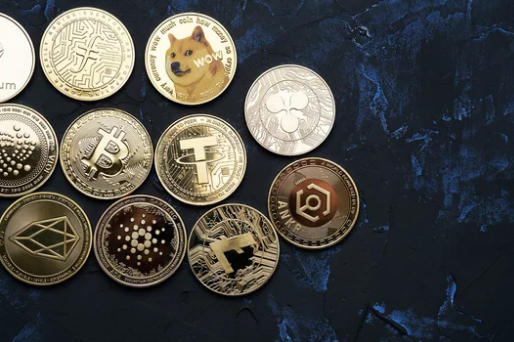Diversification is one of the most important principles in investing, and it applies just as much to cryptocurrency trading as it does to traditional assets. With the crypto market known for its volatility and unpredictability, putting all your money into a single coin can expose you to unnecessary risk. On the other hand, building a diversified portfolio allows you to balance potential rewards while minimizing losses.
In this guide, we’ll explore why diversification matters in crypto, the best ways to diversify, and practical strategies beginners can use to create a safer, more profitable portfolio.
Why Diversification Matters in Crypto
The crypto market is highly dynamic. Prices can rise or fall by double digits in just hours. Without diversification:
- High risk exposure: If your only investment crashes, you could lose everything.
- Missed opportunities: Focusing on one coin means you might overlook better performers.
- Emotional stress: Watching your entire portfolio swing wildly increases FOMO and panic.
With diversification:
- Risk is spread out across multiple assets.
- Potential for steady growth as different coins perform differently.
- Psychological comfort since no single loss wipes out your capital.
Diversification doesn’t guarantee profits, but it’s the best defense against crypto volatility.
Types of Crypto Assets to Include in a Diversified Portfolio
When diversifying, think beyond just holding a few altcoins. Different categories of crypto serve different purposes.
1. Bitcoin (BTC) – The Foundation Asset
Often called digital gold, Bitcoin is the most established cryptocurrency. It’s less volatile than smaller coins and often acts as a store of value. Most portfolios should allocate a percentage to BTC.
2. Ethereum (ETH) – The Smart Contract Leader
Ethereum powers DeFi, NFTs, and Web3 applications. Holding ETH gives exposure to the ecosystem that drives much of blockchain innovation.
3. Large-Cap Altcoins
Coins like Binance Coin (BNB), Solana (SOL), and Cardano (ADA) have strong adoption, large communities, and long-term growth potential.
4. Stablecoins (USDT, USDC, DAI)
Stablecoins are pegged to fiat currencies like the U.S. dollar. They provide stability, liquidity, and a safe haven during market downturns.
5. DeFi Tokens
Tokens such as Aave (AAVE) or Uniswap (UNI) represent decentralized finance protocols. They offer exposure to lending, borrowing, and decentralized exchanges.
6. Gaming & Metaverse Tokens
Coins like Decentraland (MANA) or Axie Infinity (AXS) tap into the growing blockchain gaming and virtual world sectors.
7. Privacy Coins
Monero (XMR) and Zcash (ZEC) focus on financial privacy and anonymity, appealing to a specific niche of investors.
8. Utility Tokens
Tokens like Chainlink (LINK) or Polygon (MATIC) provide services to the blockchain ecosystem and can grow with broader adoption.
How to Build a Diversified Crypto Portfolio
1. Allocate by Risk Level
Divide your portfolio into high-risk, medium-risk, and low-risk assets.
- Low-risk: Bitcoin, Ethereum, stablecoins.
- Medium-risk: Large-cap altcoins with strong fundamentals.
- High-risk: Newer altcoins, meme coins, or experimental projects.
2. Apply the 50/30/20 Rule (Example)
- 50% in stable assets like BTC, ETH, and stablecoins.
- 30% in promising large-cap altcoins.
- 20% in high-risk, high-reward tokens.
This keeps your portfolio balanced while leaving room for growth.
3. Use Dollar-Cost Averaging (DCA)
Instead of buying all at once, invest small amounts regularly. This strategy smooths out price volatility and reduces the risk of buying at market peaks.
4. Diversify Across Sectors
Don’t just buy multiple coins from the same niche. Spread investments across DeFi, NFTs, infrastructure, metaverse, and privacy coins.
5. Rebalance Regularly
Over time, some assets will outperform while others lag. Rebalancing—adjusting allocations back to your target percentages—helps lock in profits and control risk.
Common Mistakes to Avoid in Portfolio Diversification
- Over-diversifying – Owning 50 coins spreads you too thin and makes tracking difficult.
- Chasing hype – Adding coins just because they’re trending can backfire.
- Ignoring fundamentals – Not all altcoins have real utility or strong teams.
- No exit strategy – Diversification is pointless if you don’t have clear profit-taking rules.
Practical Tools for Managing a Diversified Portfolio
- Portfolio Trackers: Blockfolio, Delta, CoinStats.
- Exchanges with wide selections: Binance, Kraken, Coinbase Pro.
- Hardware Wallets: Ledger Nano X, Trezor for secure storage.
- Research Tools: CoinMarketCap, Glassnode, Messari for project analysis.
Final Thoughts: Diversify Smart, Not Randomly
Building a diversified crypto portfolio is about strategy, balance, and discipline. By combining Bitcoin’s stability, Ethereum’s innovation, stablecoins’ safety, and carefully chosen altcoins, you can reduce risk while maximizing opportunities.
Remember: Diversification doesn’t eliminate risk—it manages it. The crypto market will always be volatile, but a well-structured portfolio helps you survive downturns and thrive in bull runs.
Your ultimate goal as an investor should be long-term growth, not quick wins. Diversify wisely, stay disciplined, and you’ll position yourself for success in the ever-changing world of cryptocurrency.





